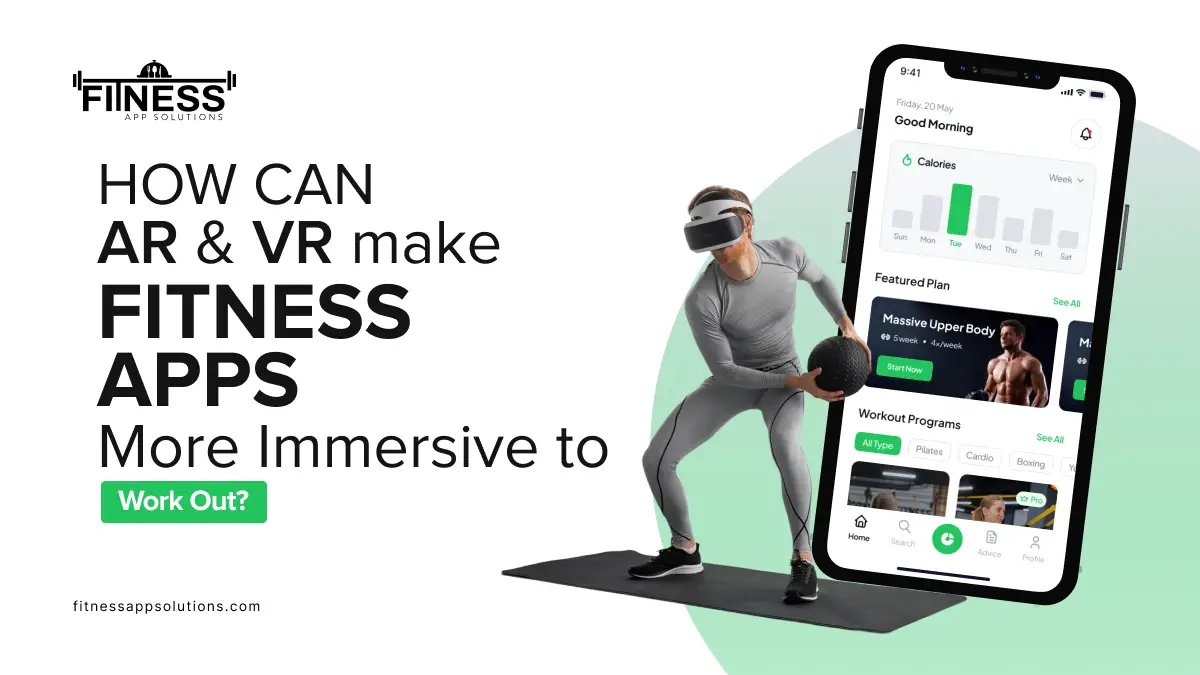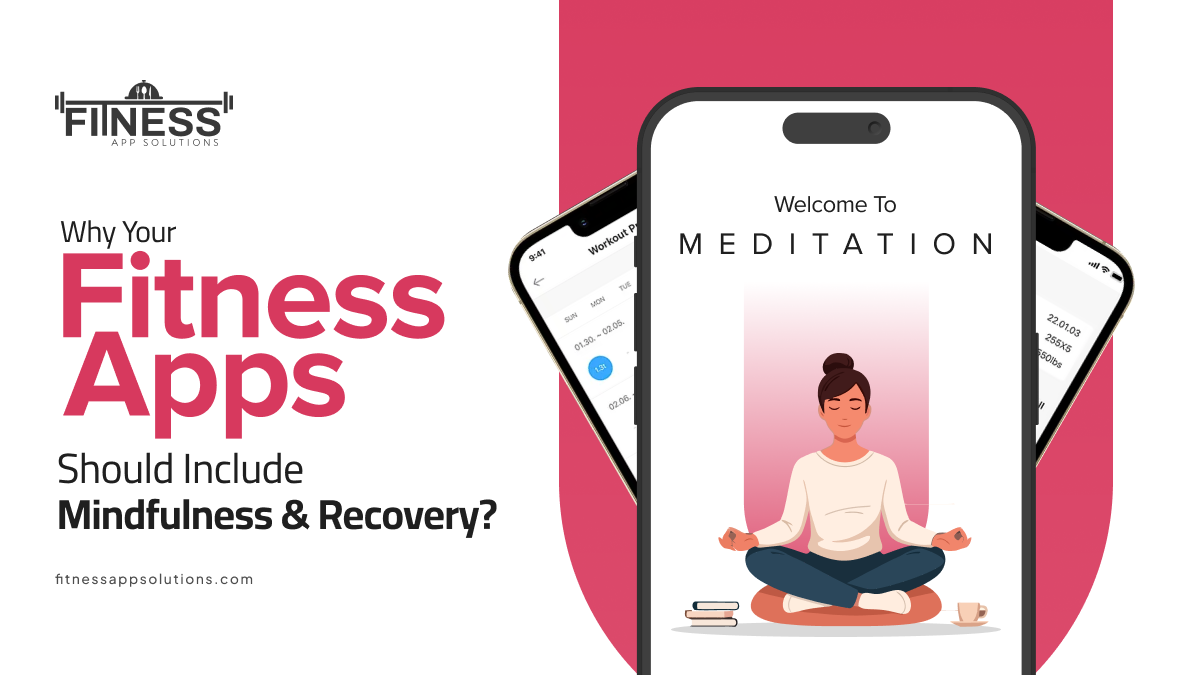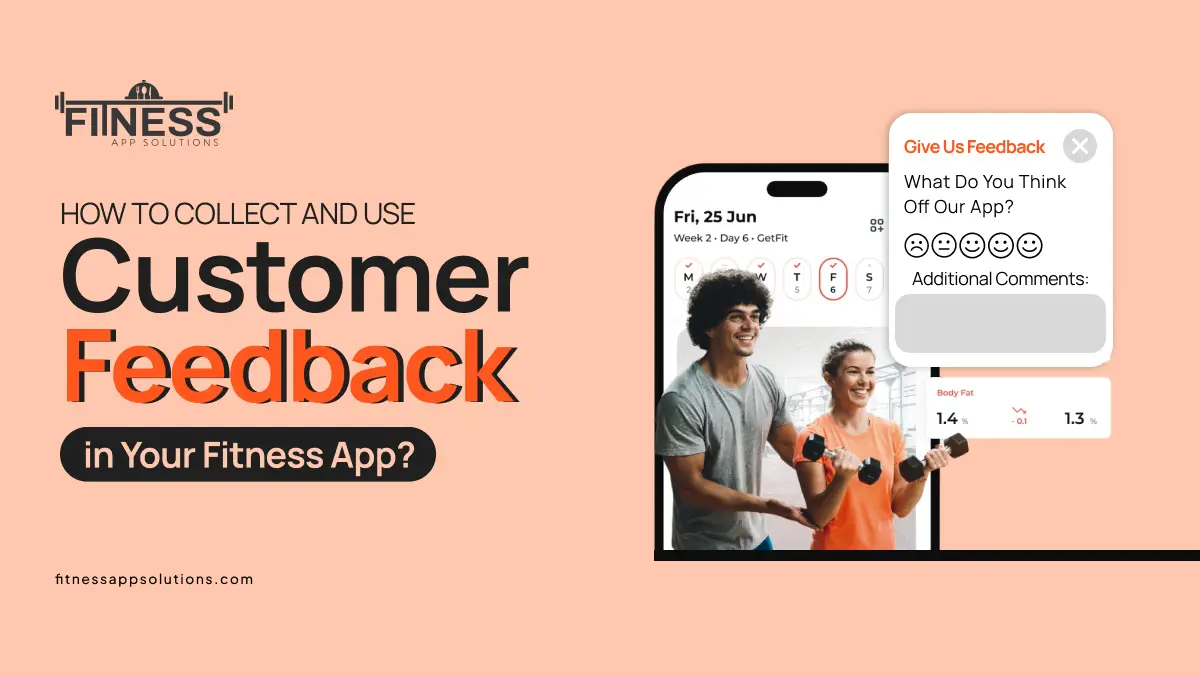The fitness industry is being transformed by new technologies, which turn workout routines into more interactive and interactive experiences. Traditional exercise routines struggle to engage their users in the long term. The combination of Augmented Reality (AR) and Virtual Reality (VR) introduces a new, immersive experience, which can transform fitness apps by offering interactive settings and interactive guidance.
These technologies bridge the gap between physical exercise and virtual engagement and, through that, workouts are enjoyable and personalized. This article explores the key aspects of utilizing AR and VR in fitness app usage, demonstrating how they impact results and user engagement.
From understanding the technology foundations to methods of implementation and future trends, this guide follows readers through a comprehensive roadmap for fitness app developers and users.
What is Augmented Reality (AR)?
Augmented Reality enhances the existing world by overlaying digital information and graphics onto the real one, often by way of smartphones or AR glasses. The overlaying information can provide the workout directions, motivational quotes, or virtual items that are woven into the physical user space. By enhancing reality instead of replacing it, AR makes workouts an interactive experience while remaining anchored to the user’s environment.
Fitness apps take advantage of AR to offer guidance during exercises and track user performance graphically, increasing interaction without the need for specialized hardware apart from a cell phone. The interactive aspect of AR encourages an interactive and motivated workout session.
What is Virtual Reality (VR)?
Virtual Reality puts the user inside a totally computer-generated 3D world accessed on headsets. Total immersion excludes the external world and transports users to active virtual environments designed for fitness exercises. Virtual Reality environments can simulate outdoor routes, gyms, or fantasy imagination areas.
Full immersion allows people to forget physical labor and focus only on the experience, which can enhance motivation and reduce perceived exertion. VR fitness apps allow interactive training, real-time feedback, and game-like challenges for an enjoyable workout.
Why add AR and VR to Fitness Apps? The Compelling Benefits

Revolutionizing Exercise Experience
Mixing AR and VR with fitness applications yields numerous advantages that outweigh some of the traditional drawbacks of traditional workout routines. To start, it makes exercising a fun and interactive adventure from what might otherwise be a monotonous, solo endeavor. This encourages users to stay interested and dedicated.
Personalized Coaching and Safety
Immersive tech enables personalized training with virtual coaches that monitor movement and provide real-time, personalized feedback to optimize form and performance, reducing risk of injury. This creates a safer and more productive workout environment even without a real-time instructor.
Motivation through Gamification and Social Interaction
Gamification elements incorporated through AR and VR induce motivation through challenges, rewards, and social competition. Users will want to exercise if they find it fun and rewarding.
Other Benefits:
Unmatched Interactive Ness and Motivation
AR and VR apps provide immersive experiences that engage users from fatigue or tedium and motivate them to stick to regular exercise habits.
Personalized Guidance and Immediate Feedback
Smart virtual trainers adapt exercise routines in real time to individual needs and performances.
Gamified Exercises That Encourage Commitment
Compete, challenges, and badges turn exercise into achievable goals.
Accessibility and Convenience
Exercise is made accessible anywhere without dependence on equipment or gyms.
Safe Discovery of New Activities
Fitness AR apps have high-risk or new exercises are simulated virtually, enabling users to experiment without risk.
Social Connection and Motivation
Virtual group classes and competition provide a sense of belonging and accountability.
Advanced Metrics and Progress Monitoring
Sensors provide actionable analytics in order to fine-tune fitness regimens over time.
How to Integrate AR and VR in Your Fitness Apps?
Fitness app development companies must follow these steps to integrate AR and VR into the fitness app to make the user experience more exciting and increase the user retention:
1.Know Your Target User and Use Case
Before jumping into development, it’s crucial to determine your app’s core user demographic and what type of fitness experience will suit them best. Casual consumers might be more inclined towards AR experiences using their smartphones for convenience, while gamers or fitness zealots might be looking for deeply immersive VR workouts via headsets. Setting this early informs technology decisions and feature sets.
2.Design Immersive and Intuitive User Experiences
AR/VR fitness app success is based on delivering seamless and interactive user experiences. Exercises need to be easy to identify with visual and audio cues, simple navigation, and inviting spaces to encourage use. Real-time feedback in the guise of virtual trainers or HUD projections adds value by helping correct posture and pacing for users.
Visual richness in the 3D environments that personify the exercise routine can maximize user satisfaction and engagement, while accessible controls enable users to remain focused on their exercise task without struggling with the interface.
3.Incorporate Gamification and Social Features
Gamification techniques are powerful tools to increase user engagement and retention. Through enabling challenges, leaderboards, rewards, and virtual rivalry, fitness apps encourage users to push and acknowledge achievement.
Social features supplement gamification by fostering interaction among users, creating virtual fitness groups where users motivate and encourage one another. Multiplayer or group classes enhance adherence through introducing accountability and fun.
4.Utilize Motion Tracking and Sensors
To provide effective feedback and interactive workouts, AR and VR applications need to incorporate motion tracking functionality. With smartphone cameras, wearable fitness trackers, or specialized sensors, these applications track user movements, heart rate, and other biometrics.
This information helps virtual coaches dynamically adjust training intensity and form guidance, which improves workout effectiveness and safety. It also makes users able to observe objective progress statistics, keeping them motivated for longer periods.
5.Assure Cross-Platform and Device Compatibility
Expanding the user base implies apps that are smooth on all AR and VR hardware and software. Developing with ARKit, ARCore, Unity, and Unreal Engine frameworks may simplify building for mobile phones, tablets, and most VR headsets and allow for a similar user experience on all platforms.
Flexible design elements such as graphical assets and UI layouts that scale enable further compatibility and accessibility.
6.Ensure Robust Data Protection and Privacy
Fitness data and biometric information managed by fitness apps need to comply with strict data privacy regulations and policies to ensure users’ trust is protected. Policies should be concise, data should be encrypted, and secure cloud storage should be available that developers implement responsibly.
User consent handling and openness about data usage increase trust and encourage continuous usage.
What are the Restrictions and Challenges of AR and VR Adoption in Fitness Apps?

Hardware Prices and Availability
The initial cost of a VR headset or AR glasses is still the biggest hurdle. Although smartphones are AR-capable, complete VR environments need hardware that few can afford. This restricts the target audience and slows down mass adoption.
User Comfort and Safety
Extended use of VR can produce motion sickness and eye strain in some users. Building comfortable, low-latency experiences is paramount. In addition, VR workouts usually require a safe, obstruction-free space on which to exercise, limiting where users can safely exercise.
Technical Complexity and Development Costs
Developing smooth, interactive AR and VR exercise apps involves technical expertise in 3D graphics, motion tracking, and hardware interfacing. This increases expense and time to create, which might be beyond the reach of smaller developers or start-ups.
Data Privacy Concerns
Handling sensitive personal and biometric fitness-related data invokes security concerns. Developers must comply with legal frameworks like GDPR and HIPAA to protect users’ data security, which adds to design complexity and maintenance.
Inclusive Design Challenges
Having accessibility for individuals with impairments or differing fitness capabilities requires additional features and testing. If not well designed, participative fitness experience might exclude certain groups, thereby weakening their worth and effect.
The Future of AR and VR for Fitness Apps

AI-Driven Adaptive Coaching
Artificial intelligence will enable fitness apps to give more personalized workout routines that learn from users’ improvement, liking, and biometrics. More accurate adjustments for difficulty, exercise selection, and recovery suggestions.
Wearables and Haptic Feedback
Future wearables will provide haptic feedback and resistance, recreating real-life physical sensations that create enhanced immersion. All these advancements will further close the distance between virtual and real exercise experiences.
5G and Cloud Networks
Increased connectivity via 5G and cloud technology will enable real-time multiplayer fitness workouts and social exercise experiences that connect individuals across the globe easily and in low latency.
AR in Everyday Life
Augmented reality will increasingly become part of daily life, transforming everyday walkways, gyms, and living rooms into active fitness spaces that can track activity and encourage movement throughout the day.
Extended Social Fitness Ecologies
Virtual fitness communities and competition sites will proliferate, supported by immersive technologies. Social incentives, group challenges, and fitness networking will support motivation and sustained user engagement.
Conclusion
The inclusion of AR and VR in fitness apps offers unparalleled potential for engagement, motivation & personalization. These technologies are transforming the workout to turn it into an immersive experience that invokes the senses and mind of the user.
As concerns such as hardware cost, user comfort, and privacy remain, technology and design innovation ensure costs continue to fall. Improvements in AI, wearables, and connectivity have the potential to bring immersive fitness to more people.
To fitness business and developers, embracing AR and VR allows for opportunities to revolutionize health and wellness and offer users a more immersive, rewarding & richer fitness experience.
Frequently Asked Questions (FAQs)
1.What is the difference between AR and VR in fitness apps?
AR (Augmented Reality) enhances the real world by overlaying digital information and graphics onto it, while VR (Virtual Reality) creates a fully immersive digital environment that blocks out the real world.
2.How do AR and VR enhance the fitness experience?
AR and VR enhance the fitness experience by providing immersive and interactive environments, personalized coaching, real-time feedback, and gamification elements that increase motivation and engagement.
3.What are the benefits of using AR and VR in fitness apps?
The benefits of using AR and VR in fitness apps include increased engagement and motivation, personalized coaching and feedback, improved safety and effectiveness, and enhanced social interaction and community building.
4.What are some examples of AR and VR fitness apps?
Examples of AR fitness apps include those that use smartphone cameras to track workouts and provide real-time feedback, while VR fitness apps include those that simulate outdoor environments and provide immersive exercise experiences.
5.How do I get started with AR and VR fitness apps?
To get started with AR and VR fitness apps, you can download and try out different apps on your smartphone or VR headset, and explore the various features and workouts available.



